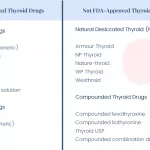Quick answer: Narcolepsy and sleepwalking are separate diagnoses, but research shows that 20‑60 % of people with narcolepsy also experience non‑REM parasomnias such as sleepwalking. In other words, the “narcolepsy sleepwalking link” is real, and it can affect how you feel during the day and how safe you feel at night.
What you’ll get from the rest of this article: a friendly walk through the science, the symptoms you should watch for, why knowing the connection matters, and practical steps you can take right now to protect yourself or a loved one. Grab a coffee (or a nap, no judgment) and let’s dive in.
What science says
How often do they co‑occur?
Studies from the Insomnia & Sleep Institute of Arizona reveal that 20‑60 % of people diagnosed with narcolepsy also show non‑REM parasomnias—including sleepwalking, sleep talking, and night terrors. The wide range reflects differences in how doctors ask about nighttime behavior and how patients remember (or forget) their nocturnal adventures.
Which brain mechanisms overlap?
The heart of narcolepsy is a loss of hypocretin‑producing neurons in the hypothalamus. This chemical normally keeps the borders between REM (dream) sleep and waking clear. When hypocretin drops, the brain’s arousal system becomes jittery, letting REM‑type muscle atonia leak into wakefulness (cataplexy) and also destabilising non‑REM sleep, which can trigger sleepwalking episodes.
Real‑world case example
Lynne Hughes, a woman from England, told the Media Institute that she “falls asleep” up to six times a day—often after laughing or crying. One night she woke up covered in floor‑cleaning spray after a sleepwalking episode that lasted several minutes. Her story is a vivid illustration of how daytime narcoleptic “sleep attacks” can set the stage for nighttime wandering.
Expert insight
According to the patient‑community guide on MyNarcolepsyTeam, clinicians should routinely screen narcoleptic patients for parasomnias because the overlap can change treatment choices and safety planning.
Spotting the signs
Core narcolepsy symptoms
When you’re looking at the classic narcolepsy symptoms, keep an eye out for:
- Excessive daytime sleepiness that hits suddenly (the “sleep attack”).
- Cataplexy – a sudden loss of muscle tone triggered by strong emotions.
- Sleep paralysis – the temporary inability to move when waking or falling asleep.
- Hypnagogic hallucinations – vivid dream‑like imagery at the edge of sleep.
Stanford Health Care’s symptom list confirms that these signs often appear together, but they rarely appear in isolation.
Classic sleepwalking clues
Sleepwalking is a type of non‑REM parasomnia. Typical clues include:
- Walking or performing activities while still asleep, with no memory in the morning.
- Disorientation upon awakening (you might think you’re still dreaming).
- Triggers such as stress, sleep deprivation, or fever.
- Frequent nighttime awakenings that feel “blank” rather than truly awake.
These signs are often dismissed as “just a weird habit,” but when they appear alongside narcolepsy symptoms, they deserve a closer look.
Red‑flag combination checklist
| Daytime clue (narcolepsy) | Nighttime clue (sleepwalking) | What to do next |
|---|---|---|
| Sudden dozing ≥3 times/day | Unexplained wandering or strange actions at night | Start a sleep diary and bring it to a sleep specialist |
| Cataplexy after laughter | Morning confusion, bruises, or injuries | Secure the bedroom (remove sharp objects, lock doors) |
Why the link matters
Risks of missing the connection
If doctors treat narcolepsy without checking for parasomnias, they might overlook safety hazards. Sleepwalking can lead to falls, burns, or even dangerous outings (imagine stepping outside in your pajamas at 2 a.m.). Misdiagnosis can also mean you miss out on medications that would calm both conditions.
Benefits of integrated treatment
When the “narcolepsy sleepwalking link” is acknowledged, treatment plans become more holistic. Certain narcolepsy medications—especially those that stabilise REM sleep—have been reported to reduce the frequency of sleepwalking episodes. Behavioral tweaks like scheduled naps also cut down daytime crashes, which in turn lowers the pressure on the brain’s arousal system at night.
Practical safety checklist (home‑first)
- Remove sharp objects (scissors, knives) from the bedroom.
- Lock doors and windows; consider a door alarm that sounds if opened.
- Install night‑lights to guide a wandering sleeper without fully waking them.
- Place a pillow or rolled towel at the foot of the bed to block forward movement.
- Keep a bedside phone or a motion‑sensor alarm to alert a partner.
Community success story
Julie Flygare, a marathon runner who lives with narcolepsy, organized “Sleep Walk 2012” during National Sleep Awareness Week. The event not only raised funds for research but also sparked conversations about how a simple walk‑together can make nighttime safety a shared responsibility. Her story, featured on Sleep Education, shows that advocacy can turn a scary symptom into a unifying moment.
Diagnosing the overlap
Typical work‑up flowchart
Here’s a simplified pathway most sleep centres follow:
- Clinical interview: questionnaires for daytime sleepiness (Epworth) and a parasomnia checklist.
- Polysomnography (PSG): an overnight sleep study that tracks brain waves, muscle tone, and eye movements.
- Multiple Sleep Latency Test (MSLT): measures how quickly you fall asleep during the day—gold‑standard for narcolepsy.
- Parasomnia interview: a partner‑oriented interview to capture nocturnal behaviors that the patient may not remember.
When to ask for a referral
If you (or someone you care for) notice at least two daytime narcolepsy symptoms and any nighttime wandering, it’s time to ask your primary‑care doctor for a referral to a sleep specialist. The overlap isn’t rare, and early intervention can prevent injuries and improve quality of life.
Treatment options that work
Pharmacologic therapies
| Drug | Primary use | Effect on sleepwalking | Notes |
|---|---|---|---|
| Solriamfetol (Sunosi) | Daytime wakefulness | May reduce fragmented sleep, indirectly lowering sleepwalking | Approved 2019; short‑term side effects can include insomnia. |
| Pitolisant (Wakix) | Histamine H3 antagonist for narcolepsy | Patients report fewer nocturnal parasomnia episodes | Works by enhancing histamine‑driven wakefulness. |
| Sodium oxybate (Xyrem) | Cataplexy & night‑time sleep consolidation | Stabilises REM/NREM boundaries → less sleepwalking | Requires strict dosing schedule; controlled substance. |
According to recent FDA approvals (see WebMD), these medications not only improve daytime alertness but also tend to smooth the night’s sleep architecture, which can diminish non‑REM parasomnias.
Behavioral and environmental strategies
- Scheduled naps: 15‑20‑minute power naps after lunch can keep daytime sleep pressure low.
- Sleep hygiene: consistent bedtime, cool dark room, limited caffeine after 2 p.m.
- Stress management: mindfulness, CBT‑I, or gentle yoga can reduce the stress‑triggered portion of sleepwalking.
- Partner involvement: a trusted bed partner can gently guide a wandering sleeper back to bed without waking them.
Patient‑focused case study prompt
If you’re comfortable sharing, consider reaching out to a local support group (many exist on MyNarcolepsyTeam) and ask someone who’s tried pitolisant about the change they noticed in nighttime wandering. Real stories create the most persuasive evidence for future readers.
Living safely together
Knowing that the “narcolepsy sleepwalking link” exists is empowering. It gives you a roadmap for conversations with doctors, family, and even roommates. Below is a quick daily routine you might try:
- Morning: Record any cataplexy triggers on a phone note.
- Mid‑day: Take a scheduled 20‑minute nap in a low‑light environment.
- Evening: Perform a quick bedroom safety walk—lights on, doors locked, hazards cleared.
- Before bed: Review the sleep diary with a partner; note any night‑time episodes.
- Next morning: Share the diary with your clinician and discuss medication tweaks.
It may feel like a lot, but each step adds a layer of protection. Over time, the routine becomes second nature, and you’ll notice fewer surprises in the middle of the night.
Takeaway
The short answer is that the narcolepsy‑sleepwalking connection is both common and clinically important. By spotting the signs early, seeking a thorough evaluation, and blending medication with practical safety measures, you can keep both your days energetic and your nights safe. If any of this resonates with you—or if you’ve already found a strategy that works—share it in the comments. Your experience could be the spark someone else needs to feel less alone.
And remember: you don’t have to navigate this maze by yourself. Reach out to a sleep specialist, join an online community, or simply talk to a trusted friend about what you’re experiencing. Knowledge, empathy, and a little bit of humor go a long way toward turning a bewildering condition into a manageable part of life.


















Leave a Reply
You must be logged in to post a comment.